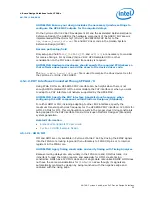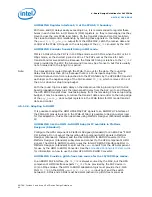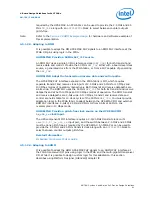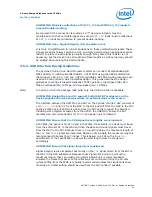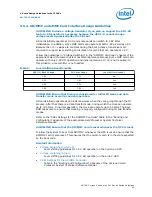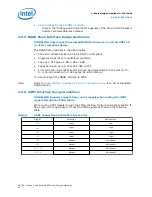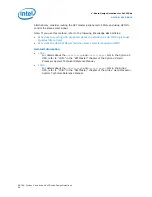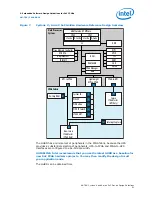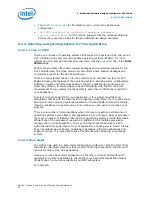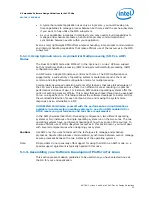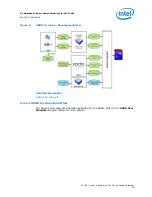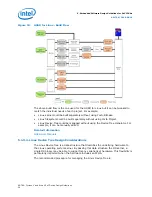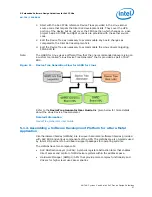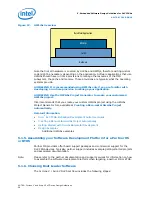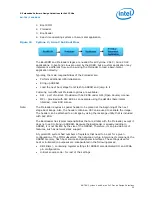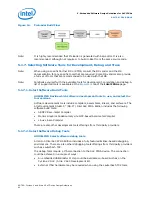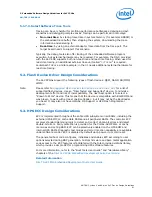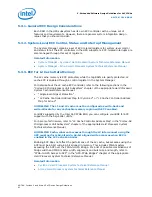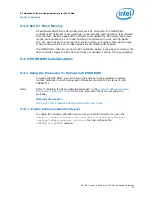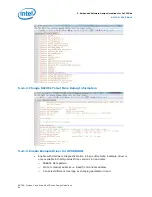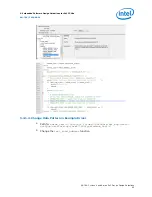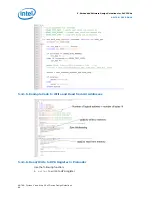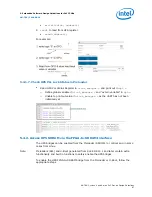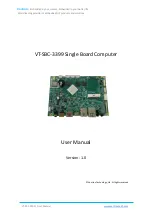
•
for the latest version, which is the best known
configuration
•
<SoC EDS installation directory>\examples\hardware
\cv_soc_devkit_ghrd
- for the version supported by the corresponding SoC
EDS version, used as a basis for the provided HWLibs design examples.
5.1.2. Selecting an Operating System for Your Application
5.1.2.1. Linux or RTOS
There are a number of operating systems that support the Cyclone V SoC and Arria V
SoC, including Linux and several real-time operating systems (RTOSs). For more
information on Intel’s SoC Partner OS ecosystem, visit the
tab of the Intel
FPGAs page.
Partner OS providers offer board support packages and commercial support for the
SoC FPGA devices. The Linux community also offers board support packages and
community support for the SoC FPGA device.
There are many factors that go into the selection of an operation system for SoC
FPGAs including the features of the operating system, licensing terms, collaborative
software projects and framework based on the OS, available device drivers and
reference software, in-house legacy code and familiarity with the OS, real-time
requirements of your system, functional safety and other certifications required for
your application.
To select an appropriate OS for your application, it is recommended that you
familiarize yourself with the features and support services offered by the commercial
and open source operating systems available for the SoC FPGA. Intel’s OS partners,
industry websites are a good source of information you can use to help make your
selection.
There are a number of misconceptions when it comes to real-time performance of
operating systems versus bare metal applications. For a Cortex A-class of processor
there are a number of features that real-time operating systems provide that make
efficient use of the processor’s resources in addition to the facilities provided to
manage the run-time application. You may find that these efficiencies result in
sufficient real-time performance for your application, enabling you to inherit a large
body of available device drivers, middleware packages, software applications and
support services. It is important to take this account when selecting an operating
system.
5.1.2.2. Bare Metal
The HPS can be used in a bare-metal configuration (without an OS) and Intel offers
the HWLibs (Hardware Libraries) that consist of both high-level APIs, and low-level
macros for most of the HPS peripherals.
However, to use a bare metal application for the HPS, you must be familiar with
developing run time capabilities to ensure that your bare metal application makes
efficient use of resources available in your MPU subsystem.
For example:
5. Embedded Software Design Guidelines for SoC FPGAs
AN-796 | 2018.06.18
AN 796: Cyclone V and Arria V SoC Device Design Guidelines
52


